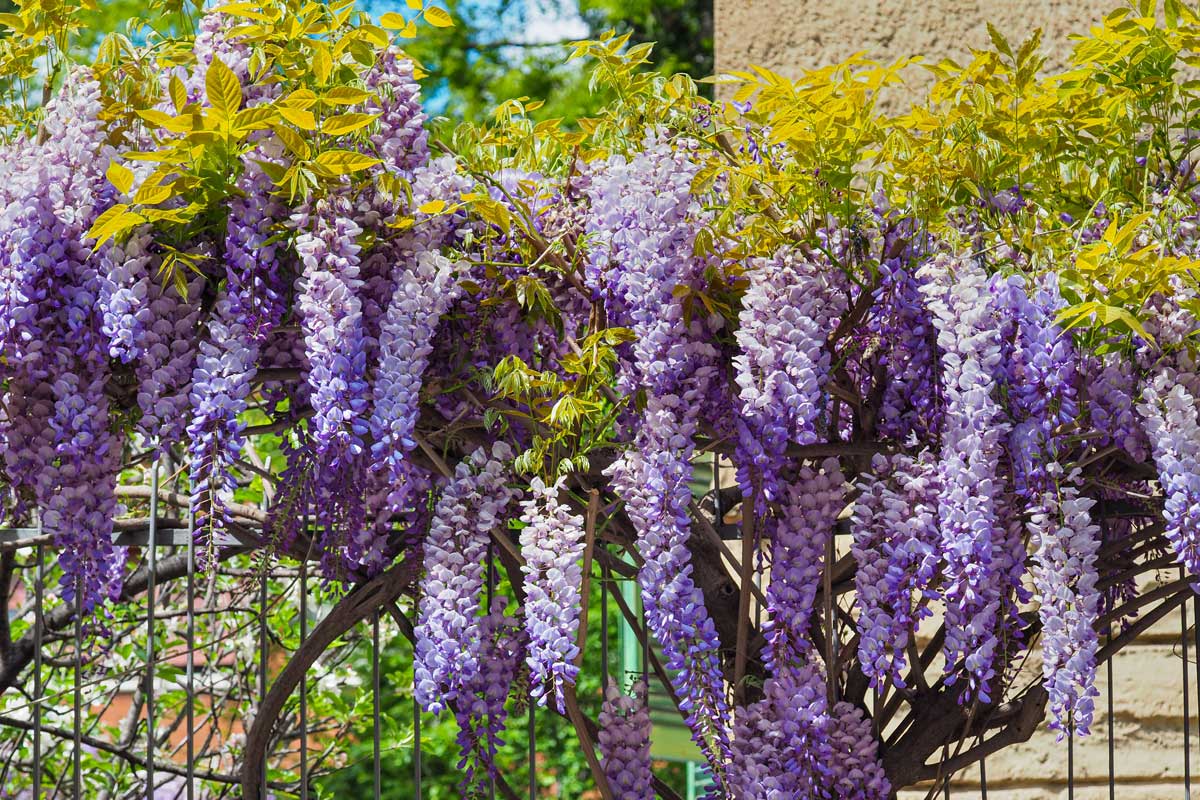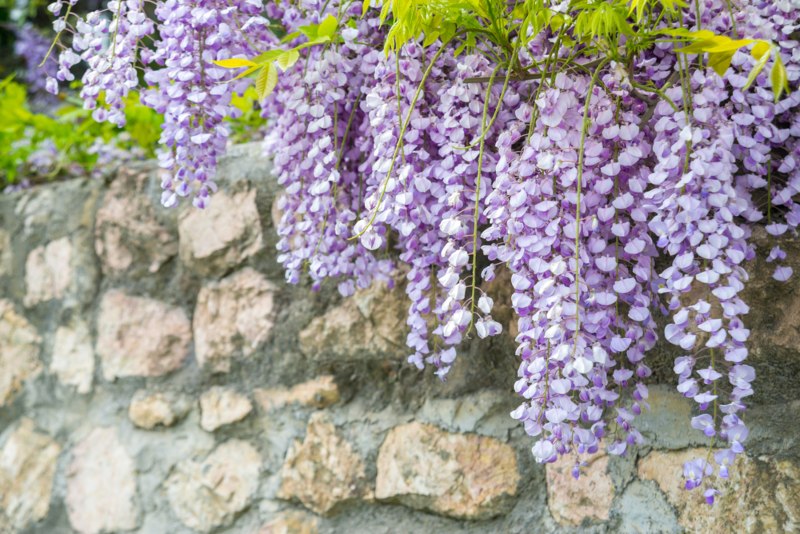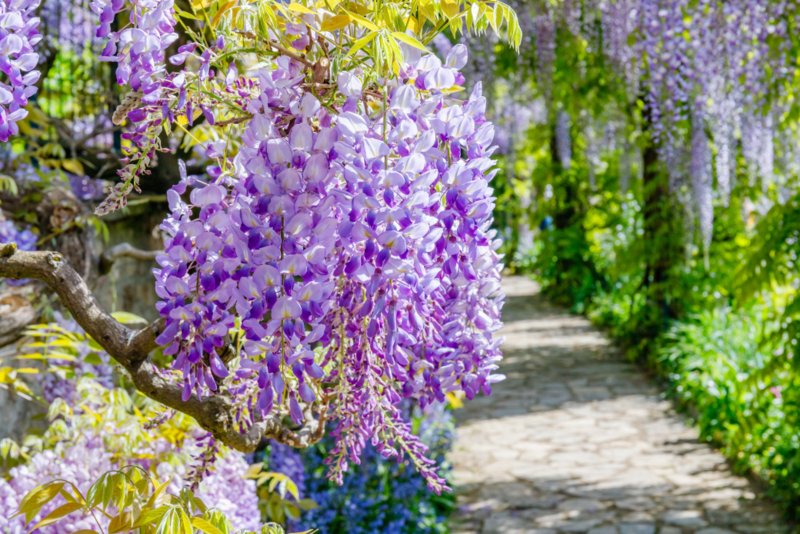
Wisteria is a timeless plant that provides stunning blooms covering its vine-like stems. These fragrant blooms are much desired, so it can be concerning if your wisteria isn’t producing an abundance of these flowers. Thankfully, there are a few tips you can try to help get the wisteria to bloom.
Why isn’t my wisteria blooming?
In most instances, you can point the blame squarely at too much nitrogen in the soil. While nitrogen is important for healthy growth, if the wisteria is getting too much it will produce an abundance of foliage but little or no blooms.
Another potential cause is the plant is simply not growing in the correct environment.
The good news is that both of these reasons can be easily corrected.
Proper Fertilization is Key
As stated above, too much nitrogen will cause the wisteria to produce plenty of leafy foliage and not many blooms.
Adding a 0-20-0 fertilizer to the plant in late spring can help improve bloom growth.
While you should always follow the instructions on the back of the fertilizer bottle, a good general rule of thumb is to apply 3 to 5 pounds of the fertilizer for every 100 square feet.

Give It Time
The issue with wisteria not blooming may just be the plant’s age. While this isn’t usually an issue if the plant was purchased from a nursery, if you got the plant from a friend or started it from seed, it may not be old enough to bloom. Wisterias don’t bloom until they reach between 7 and 15 years old.
Prune the Plant Aggressively
Wisterias are one of those plants that can actually benefit from pruning in the spring and the winter.
In the spring season, prune the plant aggressively by cutting it back a few feet shorter than what you originally planned to.
Continue to trim the plant as needed in the summer to remove any runners measuring 6 feet long or more that are not headed in the direction you want the plant to grow in.
When winter hits, prune the plant again so there is about half of the previous year’s growth.
While over pruning is common in wisteria, it can also help encourage bloom growth while also keeping the plant in check and not out of control.
It is always best to prune more than less, as timid pruning can result in a wisteria that just doesn’t bloom.

Give the Plant Full Sun
Wisterias are sun-lovers that need full sunlight. In fact, it needs at least 6 hours of sunlight to keep the plant healthy, happy, and producing those blooms.
While this is easier said than done, especially if the wisteria plant is already established in a shaded area, you can help reduce the shade by cutting back any trees that may be blocking the sun’s rays.
Wisterias are not fans of replanting, and it can actually spell disaster for the plant to try digging it up and replanting it in a new location.
If you do decide to transplant an established wisteria, make sure to get as much of the root ball and the original soil as possible to help increase the chance of survival.
The Wrong Wisteria in the Wrong Location
Sometimes, you just have the wrong type of wisteria growing for your area. For example, the Iowa State University Extension and Outreach states that the Japanese wisteria doesn’t grow well in Iowa and cannot be forced to bloom when grown in the state.
They instead recommend the Kentucky wisteria for better results. That is why it is important to research the plant before adding it to your landscape. This helps ensure you have the best plants for your specific climate.




